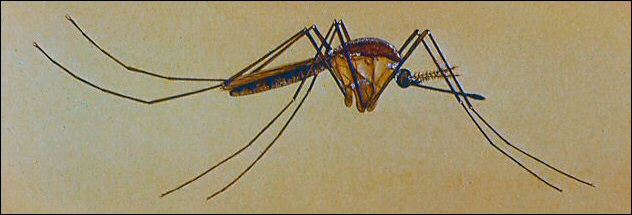
As mosquitos and mosquito-related diseases hit the news more frequently, you have to wonder how Native Americans managed before mosquito netting and DEET. Communities along the river valleys, such as the Keystone Dam village in El Paso, must have been miserable places to live in during the hot season. A smoky fire to discourage the little varmints during the heat of summer seems almost as bad an idea as letting the vampires feed.
True, some plant products tend to ward off the insects, but do we know
of any prehistoric products that do a better job than our modern ones? If not, then
people suffered. There were a few advantages to living pre-contact in the Southwest,
though. For one, malaria is an Old World disease, absent in North and South America. Or
perhaps better wording would be that it USED to be an Old World disease. Now, it
thrives in Central and South America, and for many years was a problem in the United
States. As mosquitos shift northward with warming climate, it may yet again become so.

Contributor: Arthur H. Harris, Laboratory for Environmental Biology, Centennial Museum, University of Texas at El Paso.
Desert Diary is a joint production of the Centennial Museum and KTEP National Public Radio at the University of Texas at El Paso.

A mosquito of the genus Uranotaenia. Image courtesy of the CDC.